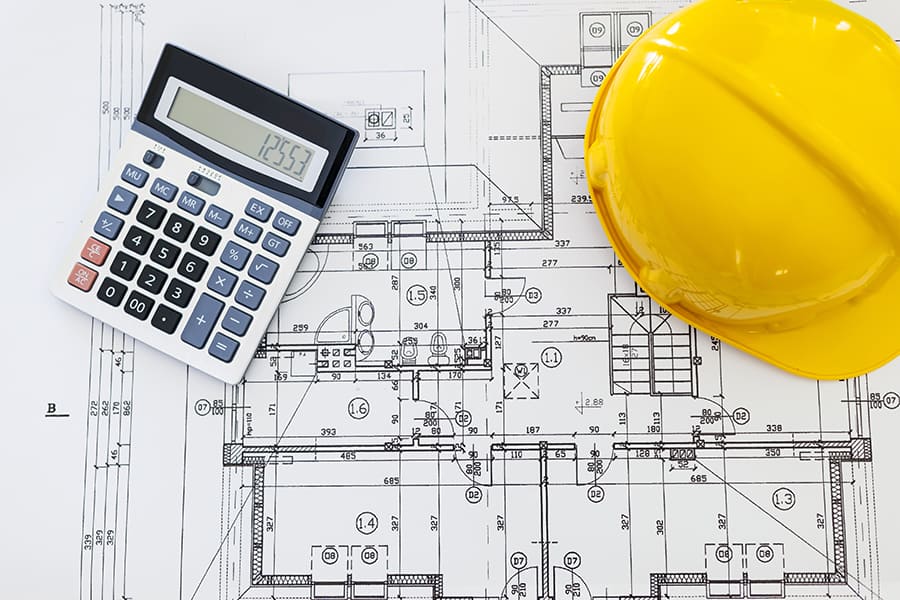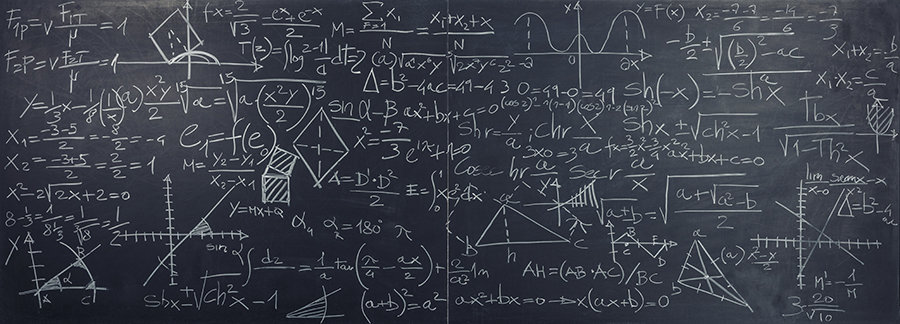I’m going to share three super easy tests that’ll help you catch the three most common engineering math mistakes.
So, let’s dive right in and learn how to avoid these mistakes and spot errors like a pro.
The 3 most common math mistakes

Understanding why math mistakes happen can really help you sidestep them. Picture driving, for example. If I tell you to keep an eye out for gigantic potholes, rogue plywood, and wild drivers on Highway X, you’ll definitely be on high alert, right? Sure, accidents could still occur, but the odds will be way lower.
#1 Careless math errors
We’ve all been there: swamped with work or just having an off day. In any case, you’re not entirely focused and you make slip-ups like:
- Punching in wrong values in a calculator or software
- Skipping steps in calculations due to carelessness
- Copying incorrect problem parameters
- Jotting down the wrong numbers
- Forgetting negative signs or units
- Scribbling with bad handwriting, leading to more errors
What to do to avoid careless math errors?
- Review your work from start to finish.
- Take your time with problem-solving.
- If you’re not in the right mindset, wait until later.
- Highlight important parts of the problem (e.g., parameters) to ensure correct values.
- Write out each math step and define your variables as I’ve done with this current limiting reactor sizing calculation.
- Review your work from start to finish.
#2 Computational math errors
If you don’t fully grasp a problem, you might mess up basic arithmetic, like adding, subtracting, dividing, or multiplying the wrong way.
Engineering problems can get pretty complicated. You might be missing variables, or not know what you’re trying to solve for, which can lead to confusion.
What to do to avoid computational math errors?
- Take time to review and understand the problem.
- Reflect on why you’re making certain arithmetic choices.
- Ask someone to go over your work if you’re stumped.
#3 Conceptual math errors
These mistakes are super common in engineering because real-world problems don’t come with prepackaged equations. You’ve got to figure out the approach and equation choice yourself, and that’s not always a walk in the park.
Misunderstanding concepts or using shoddy logic can lead to a world of mistakes. And it’s even worse when you think you’ve nailed it because you haven’t made any careless or conceptual errors.
What to do to avoid conceptual math errors?
- Learn concepts from their roots, so you don’t blindly plug numbers into equations.
- Connect textbook equations to real-life situations. Trust me, hands-on skills for engineers are super important!
- Use first principles thinking when approaching problems.
3 quick tests to catch common math mistakes in engineering

After tons of practice, I’ve become a whiz at spotting math mistakes in no time. I can quickly glance at a problem and shout, “Hold up, there’s an error!” To pull this off like a pro, I use these three nifty techniques:
- Real-world test
- Consistency test
- Accuracy test

Important Note: Make sure you practice hand calculations or at least understand how your software computes values. This helps you really get the concepts behind equations. We tend to lean on computers way too much and lose touch with basic engineering and math techniques, making it tricky to tell if a calculation is spot-on or way off.
#1 Real-world test
When crunching numbers, always double-check your units—it’s a quick and easy way to spot errors.
Take, for example, calculating the total power consumption of an electric generator. You should be solving for “kVA” (apparent power), so if you end up with a “kW” result, watch out! You’ve skipped a step, because induction machines need reactive power (kVAR) to function correctly, and kVA accounts for both kW and kVAR components.
Here are some handy unit-checking tips:
TIP #1: Dimensionless values
For log, trigonometric functions, and exponents, values need to be dimensionless. While individual terms don’t necessarily need to be, their combination must be. For instance, you can take the log of 100, but not 100 feet.
TIP #2: Arithmetic with units
Only add and subtract quantities with matching units. You can’t add 100 pounds to 200 kilograms, but you can convert one to the other and then combine them.
TIP #3: Matching perfect square units
Values inside square or cube roots and the like must have matching perfect square units.
[LATEXPAGE]
Imagine a free-falling object on Earth. The equation is $v = \surd(2gh)$, and the variables are:
v= velocity (length/time)
g = acceleration of gravity (length/time$^{2}$)
h = height an object falls from (length)
Although g and h don’t have perfect square units, multiplying them gives you:
(length/time$^{2}$) x (length) = length$^{2}$/time$^{2}$
Now you’ve got a perfect square! Taking the square root results in: $\surd(\dfrac{length^{2}}{time^{2}})$ = $\dfrac{length}{time}$
#2 Consistency test
In real life, devices and equipment operate as designed. When you flip a light switch, you expect the light to turn on; when you press the start button on a motor control panel, the motor should start. Are your calculations in line with these practical expectations?
To perform a consistency test, follow these tips:
TIP #1: Real-world check
Ensure your results make practical sense. For example, if you calculate a running motor’s power consumption to be negative, something’s wrong—you can’t have negative power consumption. But if the negative power signifies power flowing in the opposite direction, verify it’s consistent with all other values.
TIP #2: Analyzing variables
Monitor how changes in variables impact the overall output. With Ohm’s Law, V = IR, as resistance increases, the electric current should decrease.
Picture a water pipe: the more it clogs, the greater the water resistance and the lower the flow (or electric current).
TIP #3: Real-world implications
Reflect on the real-world consequences of your calculations. If you determine there’s no voltage drop on a 10,000-foot conductor run, something’s off—every conductor has resistance, and superconductors aren’t being installed in the field!
TIP #4: Comparison of terms
Imagine you’re dealing with an equation where you subtract two terms. What happens if you set both terms equal to each other? Let’s break it down with a real-life example.
Picture your power system drawing $Q_{1}$ reactive power for your induction loads, while your capacitor supplies $Q_{2}$ reactive power to the power source. If $Q_{1}$ > $Q_{2}$, your power system consumes reactive power, resulting in a lagging power factor. However, when $Q_{1}$ = $Q_{2}$, your power system stops chugging down reactive power and operates at unity power factor instead. Your capacitor compensates for the induction loads’ reactive power consumption.
Getting a feel for the equation like this helps you avoid slip-ups.
#3 Accuracy test
You can find a wealth of information on various equipment online. Let’s say you need to know the current consumption of a 10 HP motor running at full load. You can find actual factory-tested data in a motor manufacturer’s catalog or consult typical motor values from the National Electrical Code (NEC).
When you calculate a motor’s current draw, compare your result with these reliable values. If your figure is off by a factor of 2, you’ll know something’s amiss—even if your math looks fine on paper.
Now, if you’re working on cutting-edge tech, you might not have many trusted sources to rely on. But you can still compare your calculations with similar past values, because today’s innovations are built on yesterday’s breakthroughs.
Take SpaceX, for instance. They’re at the forefront of rocket technology, but they stand on the shoulders of NASA and other existing technologies. Did you know SpaceX wasn’t the first to build reusable rockets? The DC-X, built by McDonnell Douglas and later supplied to NASA, was the pioneer. So, when SpaceX began building rockets, they had loads of data to work with.
Common math mistakes in engineering wrap up
Even the best engineers make math mistakes. But by applying these safety nets, you’ll instantly elevate your engineering game. Remember, a single decimal point error can lead to disastrous consequences.
Besides, if you’ve got the tools to improve your work and don’t use them, well, that’s just bad engineering!
What common math mistakes have you spotted in engineering? What techniques do you use to dodge math blunders in your work?
